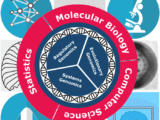
Incorporating Bioinformatics into Undergraduate Education: Practical Approaches and Benefits
October 14, 2024Bioinformatics has become an indispensable tool in modern biological and biochemical research, enabling scientists to mine vast datasets for valuable insights. As such, integrating bioinformatics into undergraduate education has become crucial for preparing students for the future of life sciences. This essay explores the practical approaches to teaching bioinformatics to undergraduates and the benefits of such integration, with examples from current curriculum implementations.
The Importance of Bioinformatics in Undergraduate Education
Bioinformatics involves the use of computer science, statistics, and information technology to analyze and interpret biological data. It has applications in various fields, including genomics, proteomics, and molecular biology. As the research landscape becomes more data-driven, it is essential for undergraduate students in biochemistry, molecular biology, and related disciplines to develop bioinformatics literacy early in their academic journey.
A problem-based approach to teaching bioinformatics is highly effective in undergraduate settings. According to the curriculum example from Mississippi State University, providing students with real-world bioinformatics problems fosters independent thinking and problem-solving skills. Rather than learning bioinformatics in isolation, students engage with it as part of their broader scientific education, making it a practical and relevant addition to existing courses.
Practical Approaches to Bioinformatics Education
Several approaches have been developed to introduce undergraduates to bioinformatics, focusing on making the subject accessible and engaging:
- Use of Online Literature Sources: One of the first steps in bioinformatics education is teaching students how to navigate online scientific literature databases. Platforms like PubMed and Google Scholar are introduced to students, allowing them to search for and analyze journal articles relevant to their studies. This skill not only improves their ability to access information but also teaches them how to evaluate and synthesize scientific data. Tools like Science Citation Index also help students understand how research articles are interconnected through citations
- Use of Online Data Sources: As students progress in their education, they are encouraged to work with primary data from online sources such as the Protein Data Bank (PDB) or gene sequence databases like GenBank. These databases allow students to work with real data, giving them hands-on experience in bioinformatics. For instance, in one senior-level molecular biology course, students are tasked with comparing gene sequences from different organisms using BLAST searches. This introduces them to critical bioinformatics tools while reinforcing their understanding of molecular biology
- Workbook and Free-Form Projects: Two common methods of teaching bioinformatics are structured workbook-based exercises and more open-ended projects. Workbooks provide a guided approach, with exercises that help students build familiarity with various bioinformatics tools. However, these resources can become outdated as databases and tools evolve. Alternatively, free-form projects allow students to explore databases independently, developing their skills through experimentation. Both approaches have been found effective, with student feedback indicating that they feel more competent in bioinformatics after completing these projects
The Benefits of Bioinformatics in Undergraduate Education
Introducing bioinformatics at the undergraduate level has several benefits, both for students who pursue research careers and those who enter other scientific fields:
- Enhancing Critical Thinking and Problem-Solving Skills: Bioinformatics problems require students to think critically about biological data and find creative solutions to complex issues. This not only improves their understanding of biology but also prepares them for the increasingly interdisciplinary nature of scientific research.
- Developing Computational Skills: Although not all students will become computational biologists, bioinformatics education gives them essential skills in data analysis, programming, and computational thinking. These skills are valuable in a wide range of careers, from laboratory research to healthcare informatics.
- Preparing Students for Advanced Research: Bioinformatics is a gateway to many advanced research areas, including genomics, drug discovery, and personalized medicine. By introducing students to bioinformatics early, undergraduate programs can help prepare the next generation of researchers to take advantage of cutting-edge technologies and data-driven approaches.
Conclusion
Incorporating bioinformatics into undergraduate education provides students with the tools and knowledge they need to succeed in a data-driven world. By adopting problem-based learning approaches, utilizing online literature and data sources, and engaging students with real-world bioinformatics challenges, educators can ensure that their students are prepared for the future of biological research. With the rapid pace of technological advancement in life sciences, bioinformatics education will continue to be an essential part of training the next generation of scientists.

















